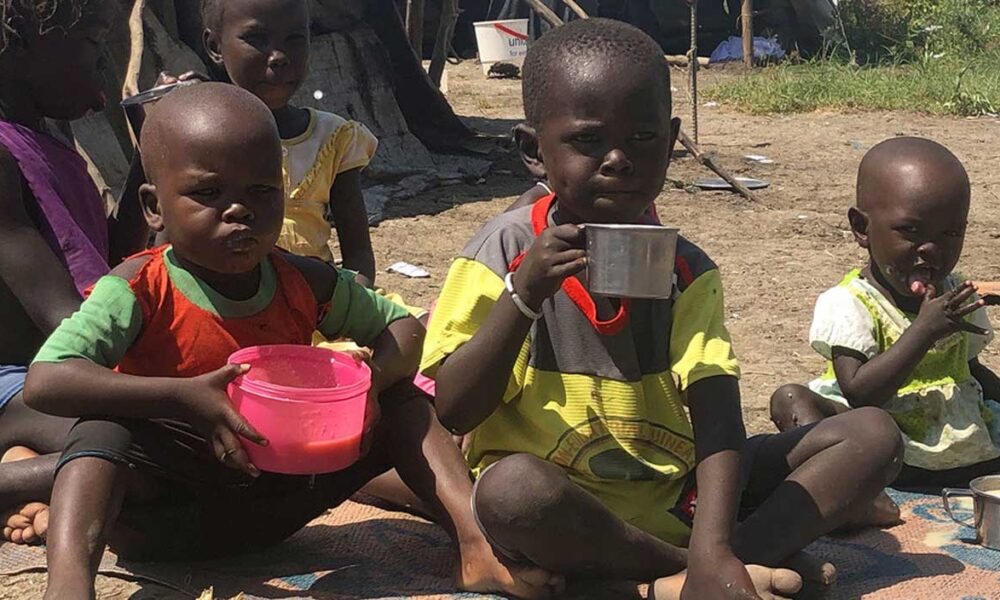According to concerns from the UN that the situation might result in “a lost generation” that is deprived of an education, more than 3.5 million children are at risk of dropping out of school because of the drought in the Horn of Africa. Unicef now predicts that 3.6 million children in Kenya, Somalia, and Ethiopia are at risk of dropping out of school as a result of the cumulative stress that the persistent drought has placed on households.
These updated statistics were provided to the Guardian. That figure has increased by more than three times in the last six months, from 1.1 million, a measure of how serious the situation becomes in many places.
Millions of families have been brought to their breaking point by four consecutive failed rainy seasons, which has increased the number of children dying from starvation and forced many to evacuate their homes in search of greater resources. However, the drought also poses a risk of having a second, less noticeable ripple impact in the three worst-affected nations, according to Abhiyan Jung Rana, Unicef’s education advisor for eastern and southern Africa. “Including these nations, there are around 15 million children who are not in school in the Horn of Africa. However, there is concern that an additional 3.6 million children would drop out as a result of the drought if they relocate with their parents to various places far from their school.
Teachers and activists in Somaliland, an independent province of Somalia, claim that they have already noticed this effect in their classrooms, with the majority of the departing students being girls. Sadia Allin, country director for Plan International, which is working with communities in Somaliland to assist them to endure the drought, stated that “when the chips are down, it is always the girls who suffer the brunt of the crisis.” It is quite unsettling. Physical, psychological, and cognitive protection are all immediately provided by education. Being out of school is frustrating for females. Their dreams are being affected, she claimed. “Girls appear to lose their rights when they believe they are losing that [education].”
- Advertisement -
The principal of a small school in the Somaliland district of Toghdeer, Kiin Farah Hasan, is hoping that this school year would be better for the female students. Only 31 of the original 56 girls were still there at the end of the previous academic year after two wet seasons had failed. Because of the drought, some of the females “got married and some of them relocated to other locations,” according to her. And for some of them, finding work is difficult even if their families are in need and have nothing. Kiin claimed that she had grown accustomed to instructing hungry students.
When we see that they appear to be hungry, we occasionally give them a 30-minute break and buy food for them to eat. For some of them, I even prepare meals at home and deliver it to them, she added. Many at-risk students would be able to continue their education with the help of a competent school nutrition program and a bus to transport them the 3-6 mile (5-10 km) distance to school, the expert claimed.
However, the lack of these, together with the increased strain on household resources, has made it more difficult for kids to attend school. According to Kiin, “three or four” of the females who left school have since gotten married. However, Jung Rana acknowledged that he did anticipate a decline in the number of girls returning to school, similar to what happened during Covid lockdowns, which in certain areas were accompanied by an increase in the rates of early marriage, adolescent pregnancy, and gender-based violence.
Since their schools are effectively closed for them and they are present with their relatives or parents, he predicted that similar incidents will occur more frequently.
“Girls especially are counted on in homes to be able to supply the caregiving parts… more than males would be, in terms of taking care of their younger siblings and taking care of duties around the home or wherever they are,” he continued. They’re probably less inclined to return under those circumstances, in my opinion.
Speaking from the Somaliland city of Hargeisa, Allin stressed the need for donor nations like the UK acknowledging the serious effects that droughts and other crises may have on girls’ education and allocate assistance appropriately. The incoming British prime minister, Liz Truss, has previously stated that women and girls are a top concern. My advice to her and the rest of the world is that education is a really potent tool. … it will [mean the] loss of a generation and [be] very expensive in the future [if we don’t] give these girls the resources that they need to continue in education,” she added.
According to Unicef, 1.57 million children in Kenya, 1.14 million in Ethiopia, and 900,000 in Somalia, including Somaliland, are in danger of dropping out of school, with almost equal percentages of boys and girls. The relocation of the family to another community with a lower educational capacity, the absence of school food programs, and parent’s inability to pay for necessities like textbooks and uniforms are all said to increase the likelihood that a kid would drop out of school.


